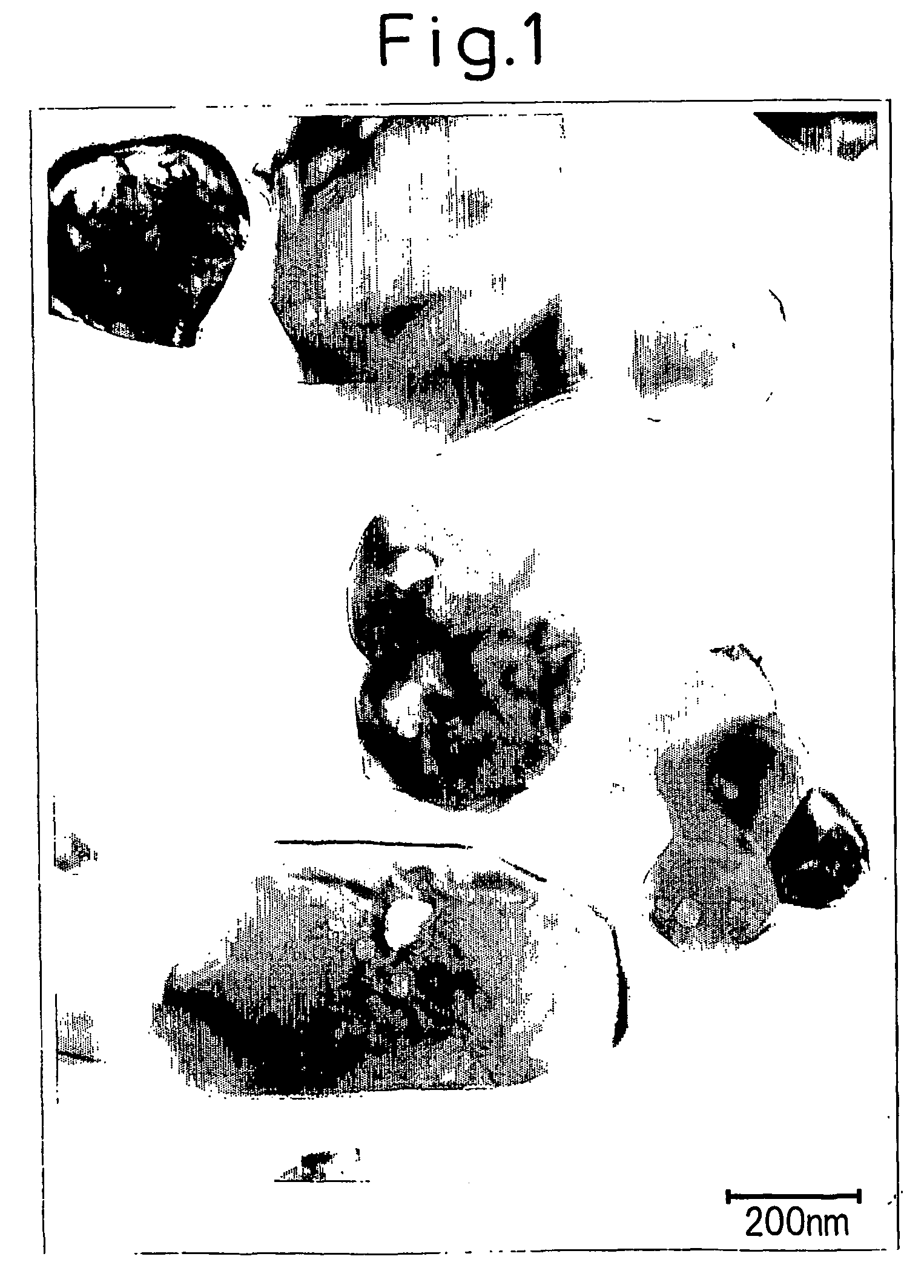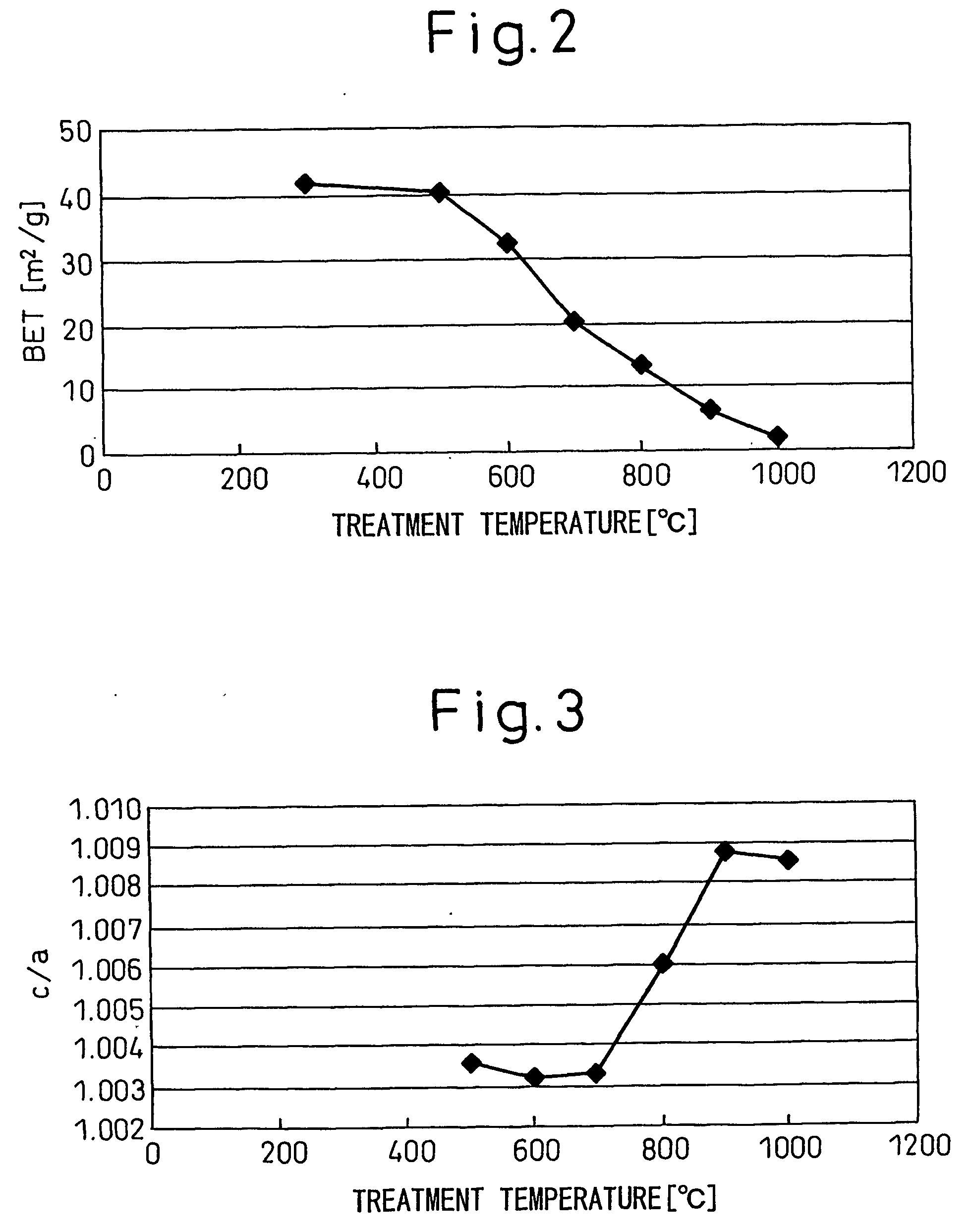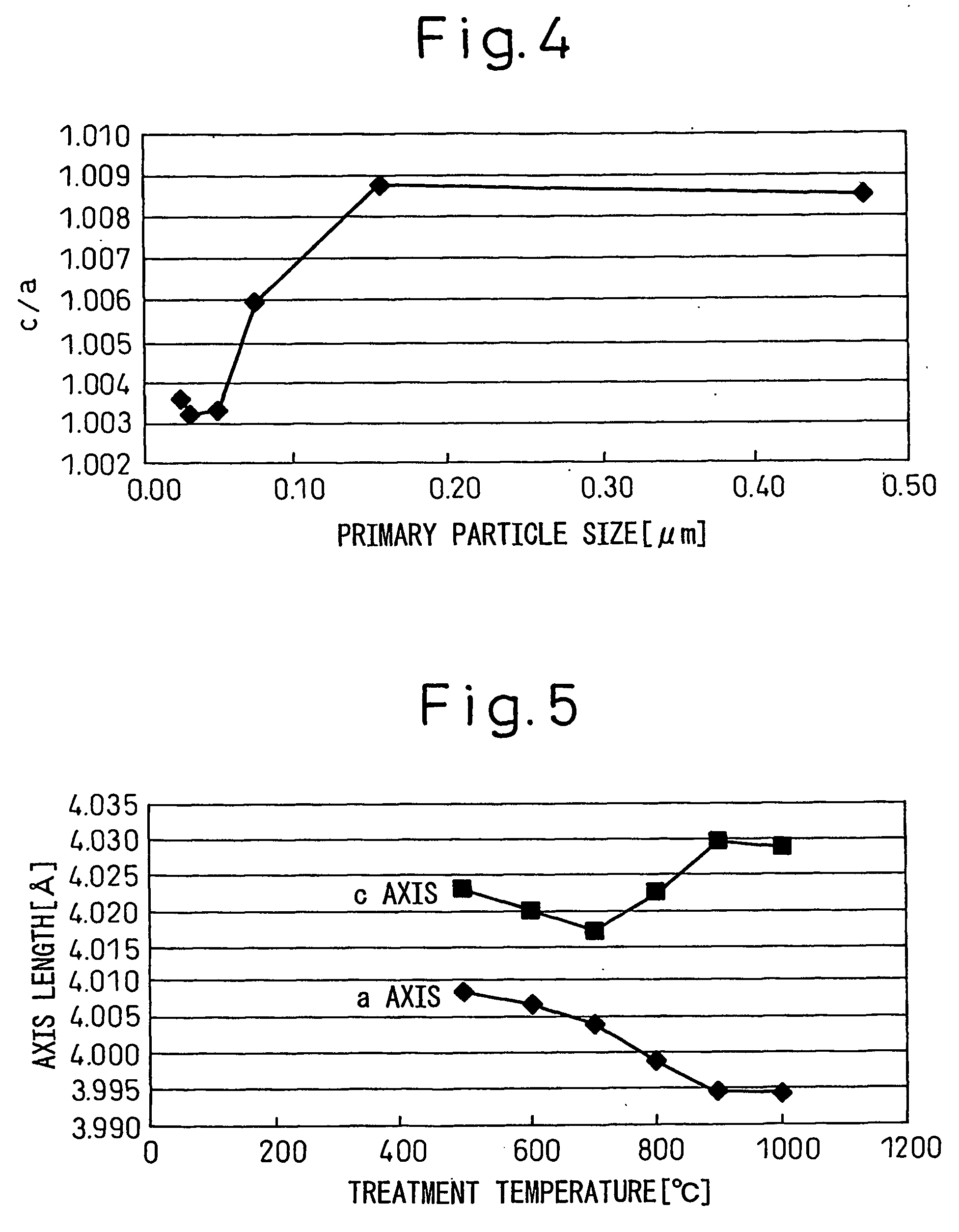Barium titanate and electronic parts using the material
a technology of barium titanate and electronic parts, applied in the field of barium titanate, can solve the problems of large particle size of barium titanate particles produced through the process, inability to increase the dielectric constant of such barium titanate satisfactorily, and failure to reduce the particle size of such barium titanate to a desired level
- Summary
- Abstract
- Description
- Claims
- Application Information
AI Technical Summary
Benefits of technology
Problems solved by technology
Method used
Image
Examples
example 1
[0093] An aqueous solution containing 0.25 mol / L titanium tetrachloride (product of Sumitomo Titanium, purity: 99.9%) was placed in a reactor equipped with a reflux condenser, and the solution was heated to a temperature near its boiling point, while escape of chloride ions was suppressed, whereby acidity of the solution was maintained. The solution was maintained at the same temperature for 60 minutes, and the titanium tetrachloride was hydrolyzed, to thereby yield a titanium dioxide sol. A portion of the thus-obtained titanium dioxide sol was dried at 110° C., and the titanium dioxide was subjected to crystallographic analysis by use of an X-ray diffraction apparatus (RAD-B Rotor Flex, product of Rigaku Corporation). As a result, the titanium dioxide was found to be brookite titanium dioxide.
[0094] Barium hydroxide octahydrate (product of Barium Chemicals Co., Ltd.) (126 g), and an aqueous solution (456 g)—which had been prepared by feeding carbon dioxide gas to a 20 mass % aqueo...
example 2
[0099] A perovskite-type BaTiO3 was produced in a manner similar to that of Example 1. The BaTiO3 was crystallized at 600° C. for two hours. The specific surface area and c / a ratio of the resultant BaTiO3 were measured in a manner similar to that of Example 1, and found to be 25 m2 / g and 1.0032, respectively. Infrared spectroscopic analysis was performed in a manner similar to that of Example 1, except that the sample was heated at 700° C. As a result, the sample was found not to exhibit a steep absorption peak in the vicinity of 3,500 cm−1 attributed to an interstitial hydroxyl group. The dielectric constant at 25° C. was 1100. The temperature characteristic thereof satisfied the X7R characteristic of EIA standard. A dielectric ceramic, dielectric film, capacitor and dielectric material obtained from the above barium titanate were excellent in their characteristics.
example 3
[0100] A perovskite-type BaTiO3 was produced in a manner similar to that of Example 1. The BaTiO3 was crystallized at 950° C. for two hours. The specific surface area and c / a ratio of the resultant BaTiO3 were measured in a manner similar to that of Example 1, and found to be 4.1 m2 / g and 1.0092, respectively. Infrared spectroscopic analysis was performed in a manner similar to that of Example 1. As a result, the sample was found not to exhibit a steep absorption peak in the vicinity of 3,500 cm−1 attributed to an interstitial hydroxyl group. The dielectric constant at 25° C. was 3600. The temperature characteristic thereof satisfied the X7R characteristic of EIA standard. A dielectric ceramic, dielectric film, capacitor and dielectric material obtained from the above barium titanate were excellent in their characteristics. A TEM image of the sample at a magnification of 250,000 showed no void resulting from removal of hydroxyl groups.
PUM
| Property | Measurement | Unit |
|---|---|---|
| diameter | aaaaa | aaaaa |
| BET specific surface area | aaaaa | aaaaa |
| temperature | aaaaa | aaaaa |
Abstract
Description
Claims
Application Information
 Login to View More
Login to View More - R&D
- Intellectual Property
- Life Sciences
- Materials
- Tech Scout
- Unparalleled Data Quality
- Higher Quality Content
- 60% Fewer Hallucinations
Browse by: Latest US Patents, China's latest patents, Technical Efficacy Thesaurus, Application Domain, Technology Topic, Popular Technical Reports.
© 2025 PatSnap. All rights reserved.Legal|Privacy policy|Modern Slavery Act Transparency Statement|Sitemap|About US| Contact US: help@patsnap.com



